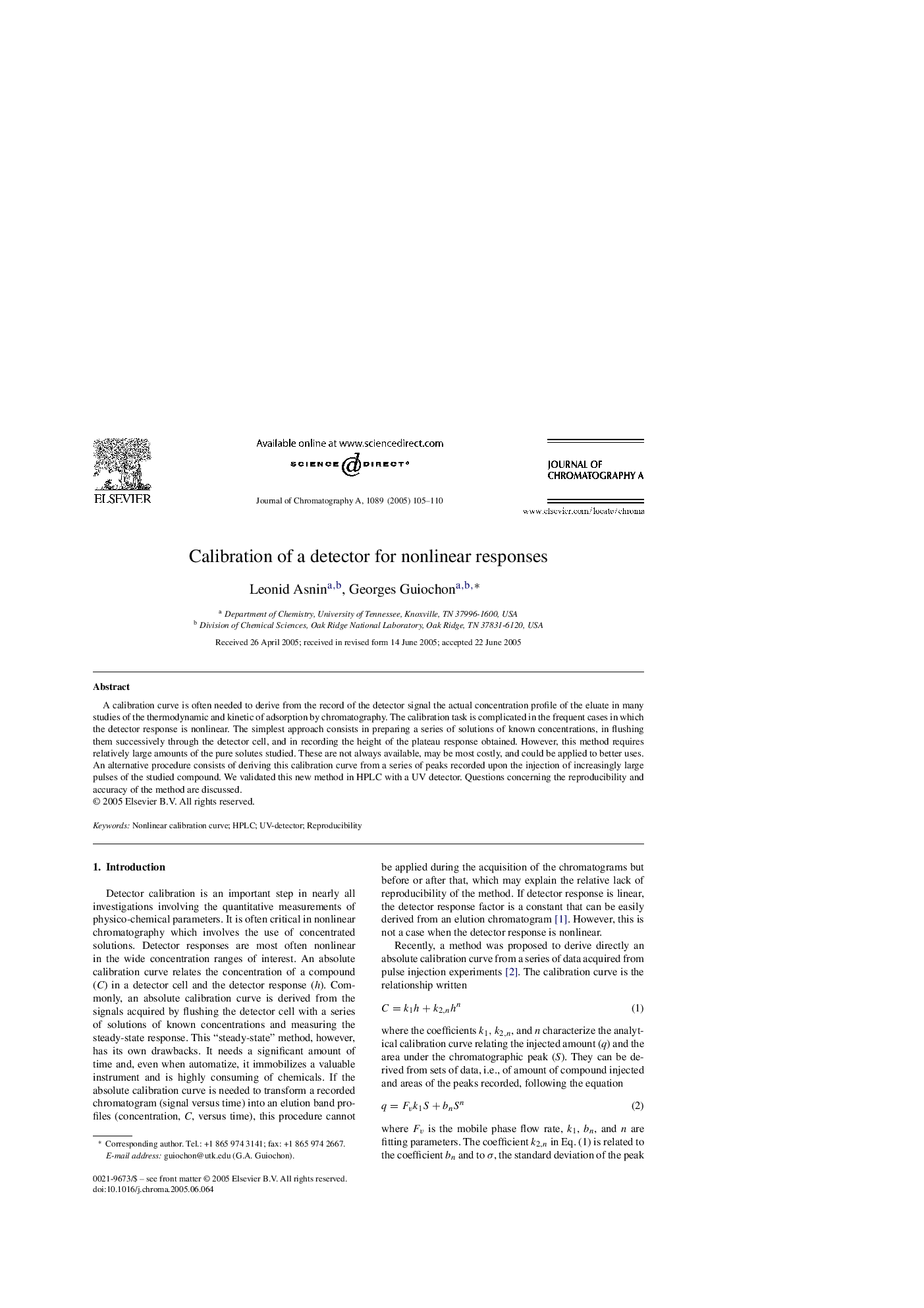| Article ID | Journal | Published Year | Pages | File Type |
|---|---|---|---|---|
| 9748723 | Journal of Chromatography A | 2005 | 6 Pages |
Abstract
A calibration curve is often needed to derive from the record of the detector signal the actual concentration profile of the eluate in many studies of the thermodynamic and kinetic of adsorption by chromatography. The calibration task is complicated in the frequent cases in which the detector response is nonlinear. The simplest approach consists in preparing a series of solutions of known concentrations, in flushing them successively through the detector cell, and in recording the height of the plateau response obtained. However, this method requires relatively large amounts of the pure solutes studied. These are not always available, may be most costly, and could be applied to better uses. An alternative procedure consists of deriving this calibration curve from a series of peaks recorded upon the injection of increasingly large pulses of the studied compound. We validated this new method in HPLC with a UV detector. Questions concerning the reproducibility and accuracy of the method are discussed.
Keywords
Related Topics
Physical Sciences and Engineering
Chemistry
Analytical Chemistry
Authors
Leonid Asnin, Georges Guiochon,
